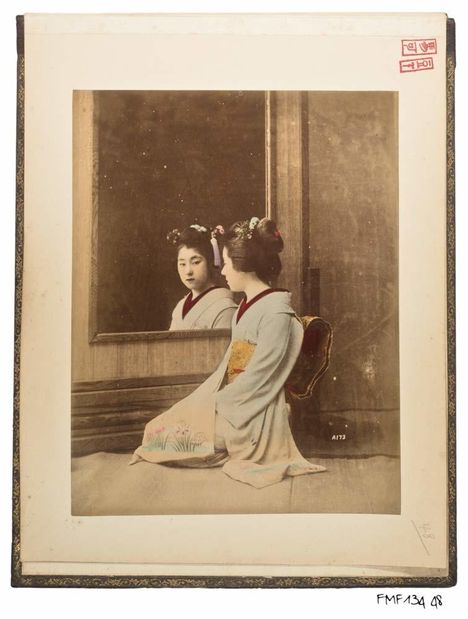Francesco Paolo Campione: The Yokohama School, Gebunden
The Yokohama School
- Photography in 19th-Century Japan
Sie können den Titel schon jetzt bestellen. Versand an Sie erfolgt gleich nach Verfügbarkeit.
- Verlag:
- Skira, 05/2026
- Einband:
- Gebunden
- Sprache:
- Englisch
- ISBN-13:
- 9788857244136
- Artikelnummer:
- 9880666
- Umfang:
- 288 Seiten
- Erscheinungstermin:
- 26.5.2026
- Hinweis
-
Achtung: Artikel ist nicht in deutscher Sprache!
Klappentext
The iconic images of the celebrated Yokohama school of photography.
A singular union took place in Japan in the second half of the 1900s: Western photographic technique joined forces with the masterful tradition of local painters, with their ability to apply colours impeccably, even on the most minute surfaces. The results were surprisingly beautiful and the subjects represented so lifelike that the finest works were difficult to distinguish from modern colour photographs. These masterpieces were created by European and Japanese artists who, in the first place, were responding to the desire of Western travellers to take home a souvenir of Japan, especially since the forced modernization of the Meiji epoch (1868-1912) was in the process of visibly transforming the country from a medieval society into a modern industrial nation. From both a technical and an aesthetic point of view, the style of what came to be known as the School of Yokohama - its name taken from the major centre of propagation - represents the height of nineteenth-century photography. Its dominant qualities are the positive value of emptiness and shadow and a search for the patterns, geometries and "ideographic vision" of space. The images are permeated with a sense of nostalgia that recalls the sweet portraits of Utamaro and the bold perspectives of Hokusai.
The subjects of the photographs render the vision, at times even in the smallest details, of a culture profoundly committed to the search for the subtle harmony between things: landscapes, buildings, interior architectures, scenes of daily life, and portraits of men and women, and even the subjective images of flowering tree branches convey the sensation of a world suspended inside an ineffable aura of perfection, an enchanting but fragile and exotic universe destined to disappear at the dawn of the twentieth century.


